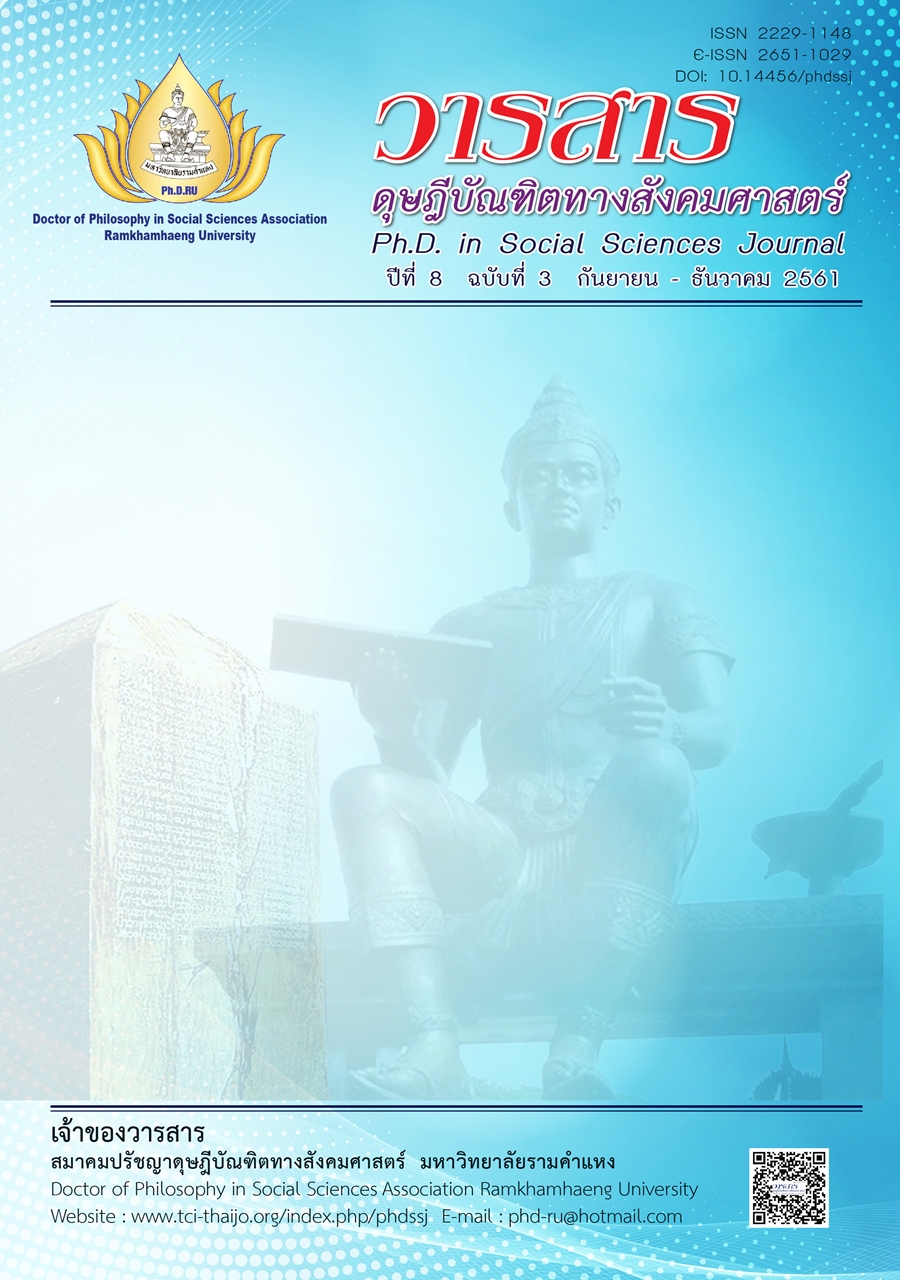Guidelines for GHGs emission reduction from Vannamei Whiteleg Shrimp Cultures from Life Cycle Analysis in Ongkharak Subdistrict, Bang Pla Ma District, Suphan Buri Province
Main Article Content
Abstract
This study aimed to study a process of Vannamei culture in Ongkharak Subdistrict, Bang Pla Ma District, Suphanburi ,to analyze and compare GHGs emission from each process and consequently, to address guidelines for reducing GHGs emission from the process. Life Cycle Analysis was used in this study so as to calculate GHGs emission from raw material e.g. fuel, chemicals, shrimp food used in the process of preparation, transportation, feeding and shrimp distribution. There are fifteen agricultures used in this study.
The results showed that GHGs emission from land preparation accounting for 1,095.1872 kgCO2eq/67 days, or 1.8253 kgCO2eq/kgproducts and that from transportation about for 151.5019 kgCO2eq/67 days, or 0.2525 kgCO2eq/kgproducts. Where as GHGs emission from feeding the shrimp about 1,344.0901 kgCO2eq/67 days, or 2.2401 kgCO2eq/kgproduct and that from the shrimp distribution accounting for 13,865.1076 kgCO2eq/67 days, or 23.1085 kgCO2eq/kgproducts. In total, the GHGs emission from the process of culture is 16,455.8868 kgCO2eq/67 days, or 27.4264 kg-CO2eq/kgproducts. Guidelines for GHGsemission reduction are for instance. 1) Planning sharing and monitoring the use of raw materials e.g. fuel, chemical, shrimp food 2) Controlling quantity of small shrimp in the wheel to not too dense. 3) Cooperation between each agriculture for setting shrimp market and buy shrimp food.
Article Details
Academic articles, research articles, and book reviews in the Ph.D. in Social Sciences Journal are author’s opinions, and not the publisher’s, and is not the responsibility of the Ph.D. in Social Sciences Journal Philosophy Association, Ramkhamhaeng University. (In the case that research is done on human, the researcher has to be trained in Ethics for Doing Research on Human Training and has to produce the evidence of the training).
References
Kiatpinyo, P. (2002). Practical technology for litopenaeus Vannamei culture. Samut Prakan: Muangkaset-Magazine. [In Thai]
MangKang, R. (2008). Application of life cycle assessment for participatory environmental management along the supply chain of individual guick frozen pacific whiteleg shrimp (Panaeus Vannamei). Bangkok: The Thailand Research Fund. [In Thai]
Office of Agricultural Economics. (2016). Cultured area and production of seawater shrimp by province 2016. Bangkok: Ministry of Agriculture and Cooperatives. [In Thai]
Saesha, K. (2015). Greenhouse gas emission from rubber plantation, Songkhla province. Master’s thesis environment, National Institute of Development Administration. [In Thai]
Suphan Buri Fisheries Provincial Office. (2017). Vannamei whiteleg shrimp. Bangkok: Department of Fisheries. [In Thai]
Thanee, N. (2015). The study of carbon emission of giant perch (lates calcarifer) and Pacific white shrimp (Litopenaeus Vannamei) meat production from fishery farms using life cycle assessmemt: A case study in Trang province, Thailand. Bangkok: Ministry of Scirnce and Technology. [In Thai]


